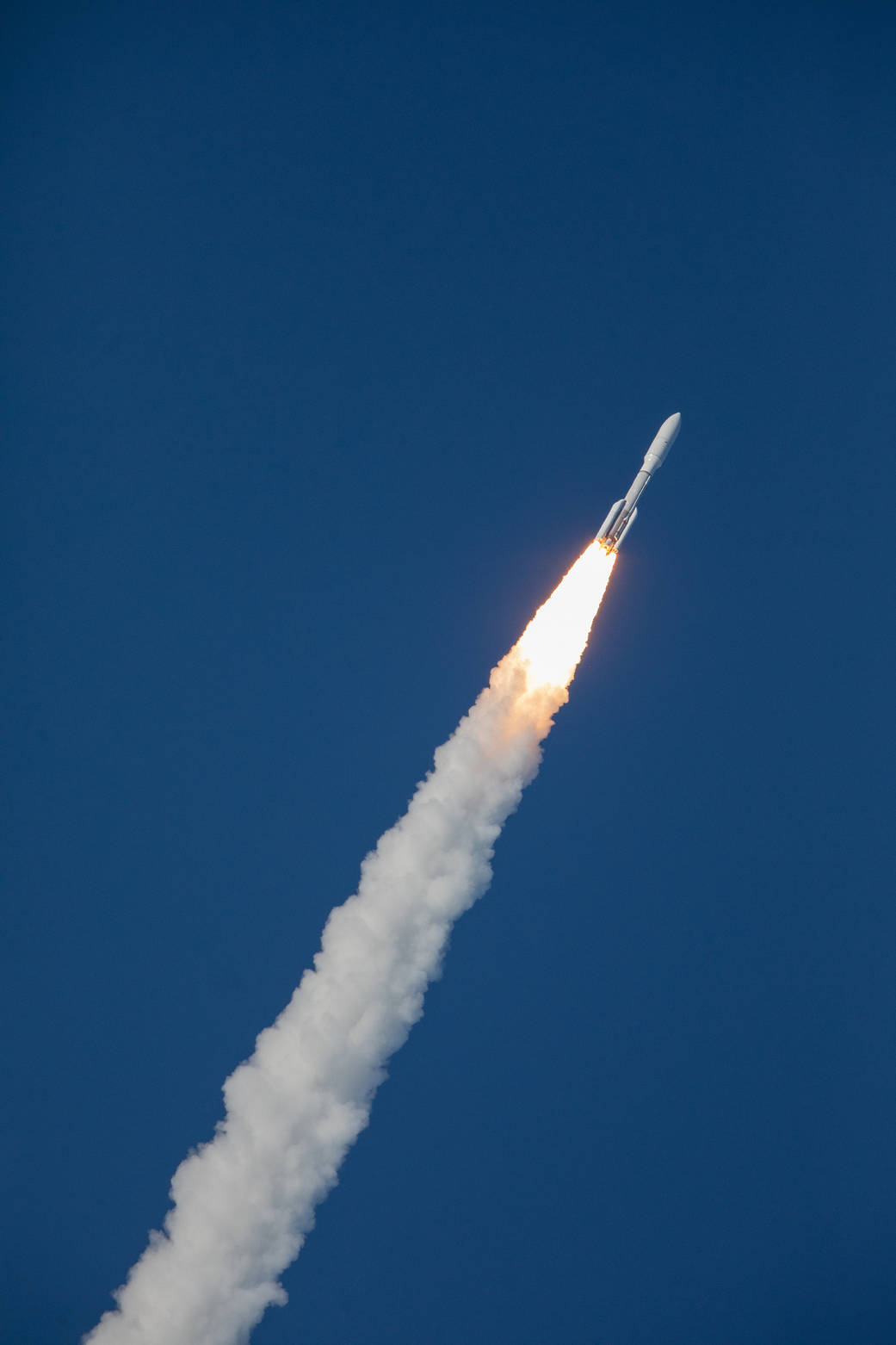A United Launch Alliance Atlas V 541 rocket, carrying the National Oceanic and Atmospheric Administration’s (NOAA) Geostationary Operational Environmental Satellite-T (GOES-T), soars upward after lifting off from Space Launch Complex 41 at Cape Canaveral Space Force Station in Florida on March 1, 2022. Liftoff was at 4:38 p.m. EST. GOES-T is the third satellite in the GOES-R series that will continue to help meteorologists observe and predict local weather events that affect public safety. GOES-T will be renamed GOES-18 once it reaches geostationary orbit. GOES-18 will go into operational service as GOES West to provide critical data for the U.S. West Coast, Alaska, Hawaii, Mexico, Central America, and the Pacific Ocean.
Image Credit: NASA/Kim Shiflett
2022年3月1日,美国联合发射联盟的阿特拉斯-5型 541运载火箭搭载着美国国家海洋和大气管理局(NOAA)的地球同步运行环境卫星-T(GOES-T,从佛罗里达州卡纳维拉尔角太空部队站的41号太空发射综合体发射升空。GOES-T是GOES-R系列中的第三颗卫星,将继续帮助气象学家观察和预测影响公共安全的当地天气事件。一旦进入地球同步轨道,GOES-T将被命名为GOES-18。GOES-18将作为GOES West投入运行服务,为美国西海岸、阿拉斯加、夏威夷、墨西哥、中美洲和太平洋提供关键数据。
图片来源:NASA/Kim Shiflett







